The E chord – the bete noire of all ukulele players. Trying to cram all your fingers into a tiny space on the fretboard. Impossible. So here are ten possible ways to play the E chord. Try them out and see if you like any of them (I don’t).
Index finger – A string 2nd fret
Middle finger – G string 4th fret
Ring finger – C string 4th fret
Little finger – E string 4th fret
Disadvantages: A lot of fingers to fit into a small space.
Index finger – A string 2nd fret
Middle finger – G and C strings 4th fret
Ring finger – E string 4th fret
Disadvantages: Takes some practice to get the hang of.
Index finger – A string 2nd fret
Ring finger – G, C and E strings 4th fret
Disadvantages: You need to have your ring finger leave the strings at a difficult angle so you can still hear the A string.
Index finger – A string 2nd fret
Middle finger – Muting the G string (stopping it from sounding by resting against it rather than fretting it)
Ring finger – C string 4th fret
Little finger – E string 4th fret
Or with your thumb.
Ring finger – G, C and E strings 4th fret
A string muted with any finger (including the underside of the ring finger).
If you stop the A string ringing in the triple-up, you will still have and E chord as the G string is giving you the same note. You can use individual fingers along with a mute to make this chord.
Index finger – Barre across all strings at the 4th fret.
Little finger – A string 7th fret.
Like a C chord moved up four frets. It’s one of my favourite ways to play it.
Disadvantages: The barre takes some practice. Can be a big jump to and from open chords.
Index finger: G string 1st fret
Middle finger: Muting C string
Ring finger: A string 2nd fret
E string open
Like an E7 chord with the middle finger muting the C string rather than fretting it. Or you could use the underside of your index finger to mute the string.
Disadvantages: Sounds a bit nasty as you have a big ‘thunk’ in the middle of the chord.
Index finger – A string 2nd fret
Ring finger – G string 4th fret
Little finger – C string 4th fret
E string open
Disadvantages: No major third note so it’s not a major chord. In some songs this it doesn’t really matter.
Index finger: E and A strings 7th fret
Middle finger: C string 8th fret
Ring finger: G string 9th fret
The Bb chord shape moved up the neck.
Disadvantages: A long way to travel if you’re playing open chords.
Index finger – A string 2nd fret
Thumb – G, C and E strings 4th fret
Disadvantages: Makes changing to and from other chords difficult. Almost always sounds horrible.
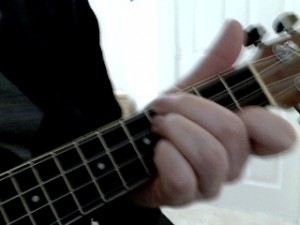
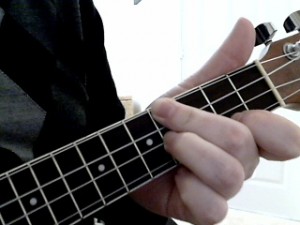
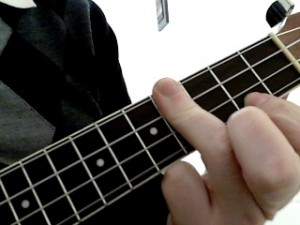
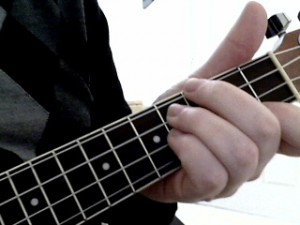

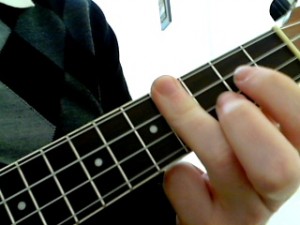
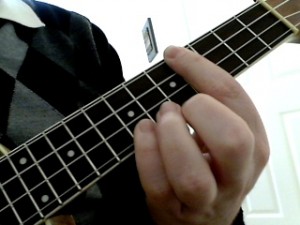
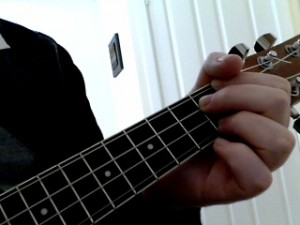
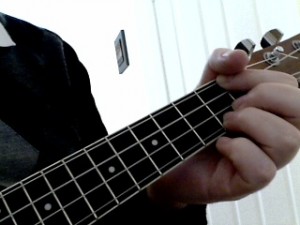
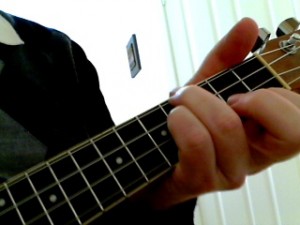
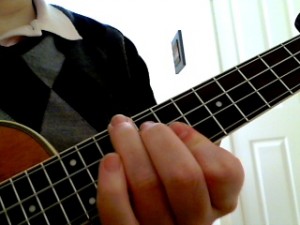
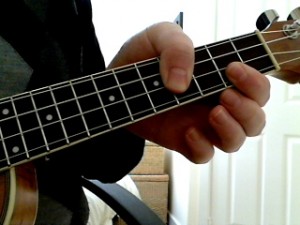



I vote for n°2.
I’m having problems with the versions involving muting a string. The muted string still makes a slight sound.
As for n°3, my ring finger doesn’t reach the E string.
And I could use n°4 but I just don’t strum the G chord (like you mentioned on ukulele 101). I still can’t manage to mute it by “touching and not fretting it”.